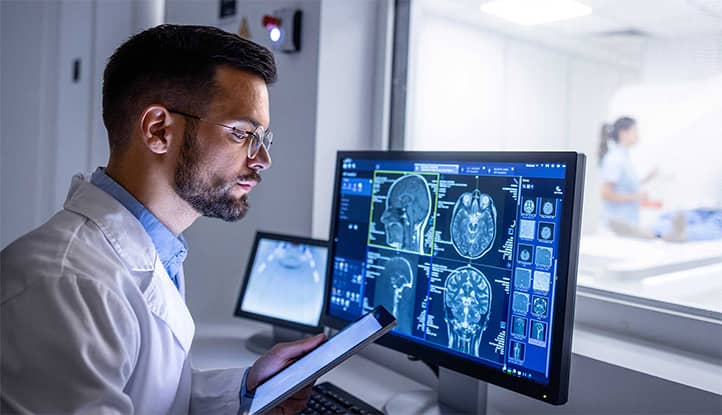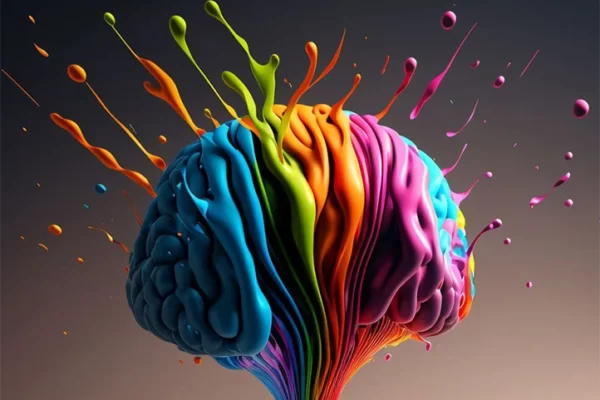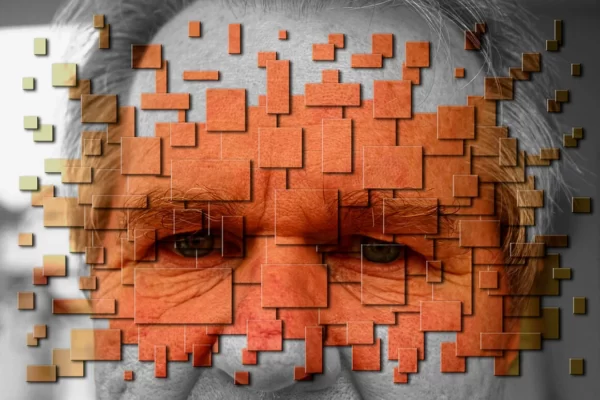Technological progress in recent decades has significantly influenced all aspects of human life, including science. In psychology, as in other fields, the integration of modern technologies has allowed for a deeper understanding of the nature of the psyche, behavior, and interpersonal relationships. Instrumental research methods, in particular, have opened new horizons for analyzing human consciousness and the unconscious, enabling scientists to obtain data that was previously inaccessible.
One of the key aspects of the significance of technology in psychology is its ability to ensure objectivity in research. Traditional methods, based on self-assessment or observation, have often been criticized for their subjectivity. By using technological tools such as neuroimaging or biometric sensors, psychologists can gather accurate and representative data on the physiological and neural processes accompanying mental activity.
Moreover, technologies enable the processing of large volumes of information, uncovering patterns that would remain unnoticed without modern computational power. In mental health research, technological innovations contribute to the development of individualized approaches to diagnosis and treatment, significantly increasing their effectiveness.
Instrumental research methods have become a central element of modern psychological science due to several key factors:
- Objectivity and Precision. Instrumental methods eliminate the human factor, often a source of errors in traditional research. For example, using electroencephalography (EEG) to study brain activity provides precise data on real-time brain function. This opens up opportunities to analyze neural processes that cannot be identified through other means.
- Depth of Research. Thanks to modern technologies, psychologists can analyze not only behavioral manifestations but also the physiological mechanisms underlying them. For instance, functional magnetic resonance imaging (fMRI) allows for studying the interactions between different brain areas during cognitive tasks. This facilitates a better understanding of how the brain functions both in normal conditions and in the presence of mental disorders.
- Broad Applications. Instrumental research methods are applied across various fields of psychology—from cognitive and neuropsychology to clinical practice. They help study a wide range of phenomena: from memory and attention processes to emotional reactions and disorders. For example, biometric tools measuring heart rate or cortisol levels allow for assessing stress or anxiety levels in real-world conditions.
- Implementation of Innovations. Modern research increasingly employs artificial intelligence, machine learning algorithms, and big data. These tools enable the analysis of complex systems, such as mental activity, at a new level. For example, AI can predict the development of mental disorders based on large datasets obtained from instrumental methods.
All of this makes instrumental research methods indispensable for modern psychology, as they not only contribute to a deeper understanding of mental processes but also enable the practical application of this knowledge.
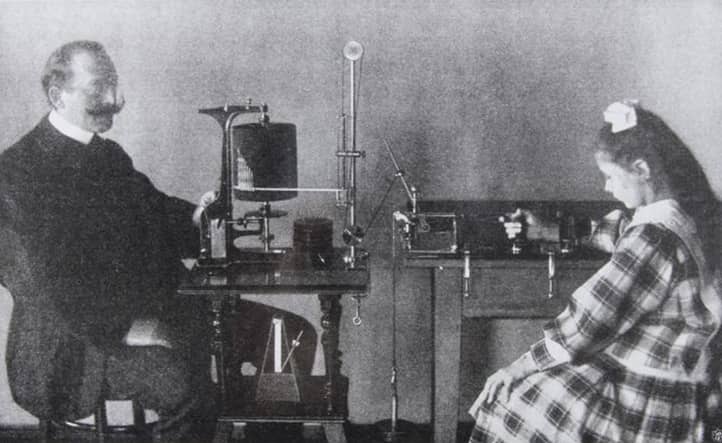
History of the Development of Instrumental Methods in Psychology
The study of the human psyche has always been a challenging task due to its multifaceted and subjective nature. For centuries, scientists have sought ways to measure psychological phenomena that would provide objective data. These efforts have gone through several stages: from philosophical reflections and behavioral observations to the development of the first experimental methods.
With the emergence of technical innovations in the 19th century, psychology gained a new impetus for development. It was during this period that instruments capable of accurately recording psychophysiological processes began to appear. This transition marked the evolution of psychology from a philosophical discipline to an experimental science employing quantitative research methods.
Early Attempts to Measure Psychological Phenomena
Initial efforts in psychology relied predominantly on observation and subjective descriptions. However, even in ancient times, philosophers such as Aristotle attempted to understand the connection between the body and the psyche. They studied emotions, memory, attention, and thinking using only descriptive methods.
The shift toward more scientific approaches began in the 17th-18th centuries, when philosophers and natural scientists such as René Descartes and Thomas Hobbes explored the influence of physiological processes on the psyche. These theoretical explorations led to the conclusion that psychological phenomena could be studied through their physical manifestations, such as bodily reactions to stimuli.
One of the first steps toward instrumental measurement was the work of Hermann Helmholtz in the 19th century. He studied the speed of nerve impulse transmission using specially designed instruments. This breakthrough demonstrated that even complex psychophysiological processes could be measured and analyzed.
Another significant milestone was the emergence of psychophysics, founded by Gustav Fechner. His studies on sensitivity to stimuli introduced quantitative approaches to psychology. Fechner developed formulas describing the relationship between a physical stimulus and subjective perception, laying the foundation for the further development of experimental psychology.
The Emergence of Technical Instruments for Research
A true breakthrough in the use of instrumental methods occurred with the advancement of technology in the 19th century. This era saw the creation of the first specialized devices for psychological research.
One of the earliest such devices was the chronoscope, invented by Franciscus Donders. This instrument measured reaction times to various stimuli. Donders used it to study cognitive processes such as attention and decision-making. His work laid the foundation for understanding how quickly the brain processes information.
Another important tool was the kymograph, developed by Carl Ludwig and adapted for psychological research by Wilhelm Wundt. The kymograph recorded changes in various physiological indicators, such as pulse and respiration, during psychological experiments. This marked the first step toward studying the connection between mental and physiological processes.
In the 20th century, technological progress enabled the creation of more sophisticated devices. Electroencephalography (EEG), developed by Hans Berger, made it possible to record the brain’s electrical activity. This technology revolutionized psychology and neuroscience, opening new opportunities to study mental processes in real-time.
Thus, the development of technical instruments for psychological research significantly expanded the boundaries of science, making it more objective and precise. This allowed psychology to strengthen its position as an experimental science and paved the way for modern advancements in the study of the psyche and behavior.
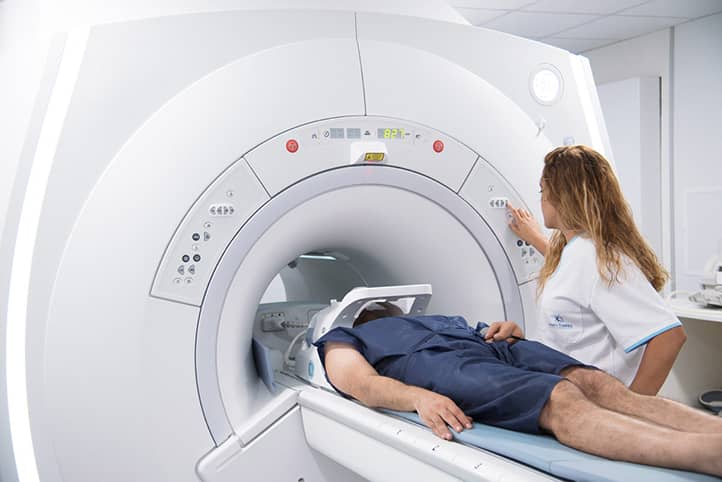
Modern Instrumental Research Methods
Modern psychology has significantly expanded its capabilities through the integration of technology into the study of the psyche and behavior. Instrumental methods allow scientists to obtain precise data about brain activity, physiological reactions, and the interconnection between mental processes and physical indicators. This ensures a more objective approach to studying complex psychological phenomena, reducing the influence of subjectivity in perceiving and interpreting results.
New technologies have unlocked access to areas of knowledge that were previously unattainable. With advancements in neuroimaging, electrophysiological methods, and biometric measurements, researchers can observe brain activity and physiological changes in real time. Additionally, the use of computerized tests and analytical tools makes it possible to process large amounts of data effectively and identify patterns that previously went unnoticed.
Neuroimaging
- Magnetic Resonance Imaging (MRI) is used to obtain detailed images of brain structures. This method allows researchers to study brain anatomy, identify pathological changes, and analyze the relationship between brain structure and mental processes.
- Functional Magnetic Resonance Imaging (fMRI) enables the study of brain activity in real time, observing which areas are activated during various tasks. For instance, fMRI is used to analyze processes such as attention, memory, or emotional responses.
- Positron Emission Tomography (PET) assesses the metabolic activity of the brain. This method determines how the brain utilizes glucose, which is the primary energy source for nerve cells. PET is particularly useful for studying mental disorders such as clinical depression or schizophrenia.
Electrophysiological Methods
- Electroencephalography (EEG) records the brain’s electrical activity using electrodes placed on the scalp. This method is widely used to study sleep, cognitive processes, and emotional reactions.
- Magnetoencephalography (MEG) measures magnetic fields generated by neuronal activity. MEG provides high accuracy in localizing active brain regions, making it indispensable for studying complex cognitive functions such as language or decision-making.
Biometric Measurements
- Heart rate sensors record heart rate variability, which can change depending on stress levels, anxiety, or emotional states. Analyzing this data helps understand the physiological basis of emotions and stress responses.
- Skin conductance response (SCR) measures changes in the skin’s electrical conductivity, which depends on the activity of sweat glands. This indicator is used to analyze emotional reactions such as fear or arousal and serves as an important tool in psychological experiments.
Computerized Testing and Data Analysis
Modern computer programs enable complex psychological tests to be conducted with high accuracy and in a short time. For example, tests to determine IQ levels, analyze personality traits, or assess cognitive abilities are now highly automated.
Additionally, artificial intelligence technologies allow researchers to process large datasets collected during experiments. This enables them to identify patterns that were previously difficult to detect and to create models for predicting behavior or emotional reactions.
Modern instrumental research methods form the foundation of scientific progress in psychology, enabling significant discoveries and a deeper understanding of human psychology.
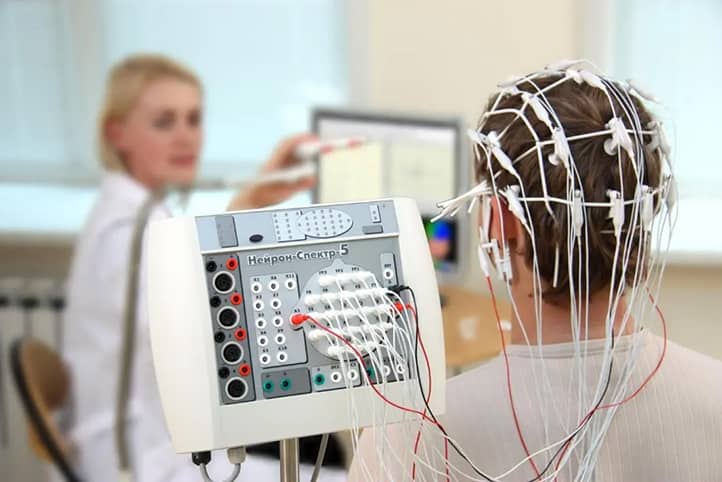
The Role of Technology in Transforming Psychological Science
Technology has profoundly influenced the development of psychology, transforming it from a discipline that long relied on subjective methods into a scientific field grounded in precise data. Instrumental research methods allow scientists to focus not only on behavioral aspects but also on the physiological and neurological underpinnings of mental processes. As a result, psychology is gradually integrating with other exact sciences, such as neurobiology and computer science.
The application of modern technologies in psychology ensures objectivity, precision, and a deeper understanding of complex psychological phenomena. Using tools for neuroimaging, analyzing physiological changes, and processing large datasets allows researchers to solve tasks that previously seemed impossible. Technologies also contribute to the discovery of new aspects of human psychology, particularly in the study of unconscious processes.
Enhancing Research Accuracy
One of the main advantages of technology is its ability to provide highly accurate results. Traditional methods, such as surveys or observations, depend on subjective factors, including researcher or participant biases. In contrast, modern instrumental research methods capture objective indicators, minimizing the influence of human factors.
For example:
- Functional Magnetic Resonance Imaging (fMRI) tracks brain activity during tasks with millimeter-level precision. This enables the study of connections between mental processes and the activity of specific brain regions.
- Electroencephalography (EEG) investigates cognitive processes, such as attention or memory, at the microsecond level.
Technologies also reduce errors during data collection and analysis. Automated systems for processing results eliminate the possibility of arithmetic or methodological mistakes. This ensures the reliability of conclusions and increases trust in the obtained results.
Increasing the Volume of Objective Data
Thanks to technology, psychologists have gained access to vast amounts of objective data that can be used for analysis, prediction, and behavior modeling. The use of sensors, neuroimaging, and other technologies enables simultaneous investigation of physiological, neurological, and psychological processes.
For instance:
- Biometric methods, such as heart rate variability or skin conductance response measurements, provide information about the physiological aspects of emotional reactions. Data collected through these tools is used to analyze levels of anxiety, stress, or emotional arousal.
Furthermore, technologies allow researchers to store and analyze large datasets in cloud systems. This simplifies access to research findings for other scientists, promoting meta-analyses and interdisciplinary approaches.
Expanding the Study of Unconscious Processes
Traditional methods for studying unconscious processes, such as Jungian psychoanalysis or projective techniques, heavily relied on the researcher’s interpretation. Technologies have made it possible to directly observe and analyze unconscious reactions and processes.
For example:
- Neuroimaging methods enable researchers to study how the brain responds to stimuli that the individual is unaware of. fMRI captures the activation of brain structures when exposed to subliminal stimuli, such as subconsciously perceived words or images.
- Electrophysiological methods, such as EEG, analyze brain activity patterns that occur in response to stimuli before the individual becomes aware of them. This opens new possibilities for studying decision-making mechanisms, emotional formation, and automatic behavioral reactions.
Thus, technology has become a catalyst for qualitative changes in psychological science. It not only enhances the accuracy and objectivity of research but also allows scientists to explore aspects of the psyche that were previously hidden.
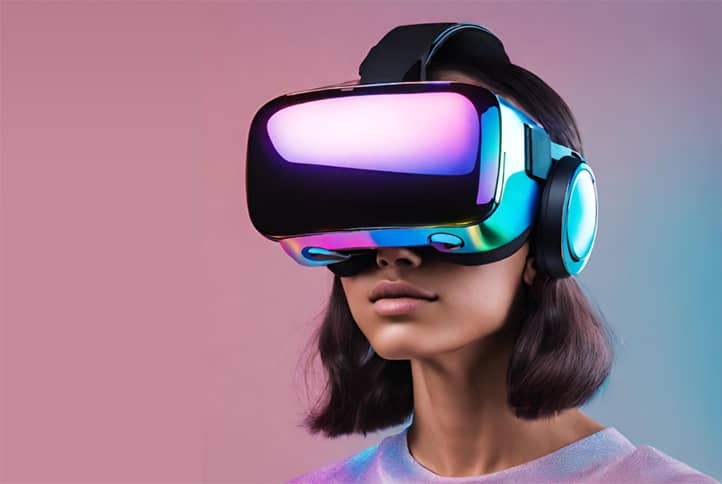
Instrumental Research Methods in Applied Psychology
In applied psychology, instrumental research methods play a critical role in addressing practical challenges. They are used for diagnosing, treating, rehabilitating, and predicting mental states and behaviors. The integration of technology not only provides deeper insights into patients’ individual characteristics but also ensures a personalized approach to therapy and learning.
These methods are applied across various fields: from clinical psychology to educational programs and human potential studies. Technology helps combine knowledge from neuropsychology, biometrics, and cognitive sciences, creating reliable tools for working with diverse clients and patients.
Use in Psychotherapy and Rehabilitation
Instrumental research methods are actively implemented in psychotherapy and rehabilitation, enabling therapists to use objective data to monitor patients’ conditions and evaluate intervention effectiveness.
- Biofeedback is one of the most common instrumental methods in therapy. It relies on sensors that measure physiological parameters such as heart rate, muscle activity, or galvanic skin response. Patients receive real-time feedback about their physiological states, helping them learn to manage emotions, reduce anxiety, or alleviate stress.
- Virtual Reality (VR) has become a powerful tool for rehabilitating patients with phobias, post-traumatic stress disorder (PTSD), or neurological injuries. VR allows the creation of controlled environments where patients can safely confront their fears or train lost cognitive functions.
- Neuromodulation methods, such as Transcranial Magnetic Stimulation (TMS) or Transcranial Direct Current Stimulation (tDCS), are used to adjust neuronal activity in patients with depression, anxiety, or neurological disorders.
Role in Diagnosing Mental Disorders
Instrumental research methods allow for more accurate diagnosis of mental disorders, providing both qualitative and quantitative assessments of a patient’s condition.
- Neuroimaging in diagnostics. Magnetic Resonance Imaging (MRI) and Functional MRI (fMRI) are used to identify structural and functional brain changes associated with mental disorders. For instance, schizophrenia is often linked with anomalies in prefrontal cortex activity, detectable through fMRI.
- EEG in identifying neurological disorders. Electroencephalography (EEG) is an essential method for diagnosing epilepsy, sleep disorders and other neurological conditions. In clinical psychology, EEG is used to study neural activity related to depression, anxiety, or ADHD.
- Biometric tests. Tools that measure physiological parameters like heart rate or pupil response are used to assess stress levels, anxiety, or nervous system reactivity. For example, galvanic skin response helps detect heightened arousal in patients with phobias.
Application in Neuropsychology and Cognitive Science
Neuropsychology and cognitive science actively use instrumental research methods to study the relationships between brain processes, behavior, and mental states.
- MRI and fMRI in cognitive function research. Using magnetic resonance imaging, researchers can analyze brain activity during cognitive tasks such as decision-making, memory recall, or problem-solving. This fosters the development of theories about how the brain processes information.
- EEG in cognitive experiments. Electroencephalography helps study processes like attention, memory, and learning. For example, EEG has shown that alpha wave activity increases in the brain during memory encoding.
- Computer simulations and models. Modern computer models simulate cognitive processes, including language, attention, and decision-making. This contributes to the development of artificial intelligence and the prediction of behavior in various situations.
Instrumental research methods not only facilitate the practical work of psychologists but also significantly expand the boundaries of science, creating opportunities for more effective patient care and deeper understanding of mental processes.

Advantages and Challenges of Instrumental Methods
Instrumental research methods in psychology have become a vital component of modern science, providing researchers and practitioners with unique opportunities to study complex mental processes. They ensure accurate and objective data collection, open new horizons for research, and significantly enhance our understanding of the brain and human behavior.
However, despite their advantages, the application of these methods faces several challenges, including high equipment costs, ethical considerations, and the need for specialized training. Balancing opportunities and limitations is a key aspect of successfully using instrumental methods.
Advantages
- Objectivity. Instrumental research methods ensure accuracy and reliability of data, minimizing the influence of subjective factors on results. For example, electroencephalography (EEG) measures neural activity in real-time, providing objective insights into brain function. This is crucial in diagnosing mental disorders where subjective evaluation may be insufficiently reliable.
- Representativeness. These methods enable researchers to analyze large datasets and obtain representative results. For instance, neuroimaging (MRI, fMRI) allows the creation of volumetric brain models that reflect not only general patterns but also individual characteristics. This supports a more personalized approach to psychological care.
- New research horizons. Technologies open opportunities to study phenomena previously inaccessible to science. For example, functional magnetic resonance imaging enables researchers to explore brain activity during complex cognitive tasks such as decision-making or creative thinking. Moreover, advanced biometric tools allow studying the impact of emotions on the body’s physiology.
Challenges
- Equipment costs. Instrumental research methods require expensive equipment, such as MRI scanners or biometric measurement systems. For instance, the average cost of an MRI machine exceeds one million dollars, excluding maintenance and personnel training expenses. This limits access to such methods for small laboratories or clinics, reducing their prevalence.
- Ethical considerations. Using instrumental methods, particularly in clinical or experimental settings, often raises ethical dilemmas. For example, neuroimaging poses privacy concerns, as brain scans may reveal information about private aspects of a person’s life. It is also crucial to consider ethical aspects when studying vulnerable groups, such as children or patients with mental disorders.
- Need for specialized training. Researchers working with instrumental methods must have advanced qualifications. This includes technical skills for operating equipment and knowledge for interpreting results. For example, analyzing functional MRI results requires understanding complex image processing algorithms and statistical methods. Lack of training may lead to errors or incorrect conclusions.
Instrumental research methods unlock numerous opportunities for advancing psychology, but their successful implementation depends on overcoming existing challenges. Addressing financial, ethical, and educational barriers will help make these methods more accessible and effective in the future.

Prospects for the Development of Instrumental Methods
Modern psychology is rapidly evolving thanks to innovative technologies that open new opportunities for research and practice. Instrumental research methods, particularly neuroimaging, biometric measurements, and electrophysiological approaches, are becoming an integral part of psychological science. The prospects for their development lie in advancing technologies, automating data analysis, and integrating these methods into practical life applications.
A special role in this is played by artificial intelligence (AI) and machine learning, which enable the processing of large volumes of data with unprecedented accuracy. The development of new technologies in neuroimaging and biometrics also significantly broadens the possibilities for studying behavior, emotions, and cognitive processes. Moreover, there is a growing trend toward integrating instrumental methods into everyday psychological practice, making them accessible not only to researchers but also to professionals working directly with clients.
Implementation of Artificial Intelligence and Machine Learning
Artificial intelligence and machine learning are becoming some of the most promising directions in the development of instrumental methods in psychology. They significantly enhance the speed and accuracy of data processing, making analysis more detailed.
- Automation of big data analysis. Machine learning enables the processing of large datasets collected through methods like functional magnetic resonance imaging (fMRI) or electroencephalography (EEG). For example, deep learning algorithms can identify hidden patterns in brain activity associated with specific mental disorders or emotional states.
- Development of personalized models. AI also facilitates the creation of individualized models of behavior or cognitive processes, allowing therapeutic interventions to be better tailored to the needs of specific clients. For instance, by analyzing data from biometric sensors, it is possible to predict stress reactions and timely suggest regulation techniques.
- Real-time integration. AI technologies are actively being implemented in mental health apps that use algorithms to monitor emotional states or behavioral patterns. This enables the provision of psychological support in real-time, significantly improving access to help.
New Technologies in Neuroimaging and Biometrics
Technologies in neuroimaging and biometrics are continuously improving, opening new horizons for psychological research.
- Advancements in neuroimaging. New methods, such as ultra-high-field magnetic resonance imaging (7T MRI), provide even greater detail in brain imaging, allowing for the study of structures at a microscopic level. This is crucial for researching neurodegenerative diseases like Alzheimer’s and their impact on cognitive functions.
- Development of portable devices. Innovations in biometrics contribute to the creation of portable and affordable devices for measuring psychological indicators. For example, modern smartwatches can already measure heart rate, heart rate variability, and stress levels. In the future, they may integrate more complex functions, such as neural activity analysis.
- Combination of methods. Combining neuroimaging with biometric measurements allows for a more comprehensive understanding of psychophysiological processes. For example, synchronous recording of EEG and galvanic skin response provides deeper insights into emotional reactions to various stimuli.
Integration of Instrumental Methods into Everyday Practice
- Therapeutic applications and gadgets. Technologies are actively being integrated into psychotherapy. For example, using virtual reality to treat phobias or post-traumatic stress disorder is becoming increasingly common. These methods allow patients to safely simulate traumatic situations and effectively work through them.
- Tools for self-monitoring. Biometric devices and apps for monitoring emotional states are becoming part of everyday life. They help users better understand their psychological state and seek help in a timely manner.
- Accessibility for professionals. Modern tools are gradually becoming available to a wide range of psychologists. For instance, portable EEG systems can be used not only in research centers but also in ordinary clinics. This expands diagnostic capabilities and improves the quality of care for patients.
The development of instrumental methods in psychology is extremely promising and multifaceted. The introduction of artificial intelligence, the latest neuroimaging technologies, and the integration of these methods into everyday practice open new possibilities for science and practice, making psychological support more accurate, accessible, and effective.
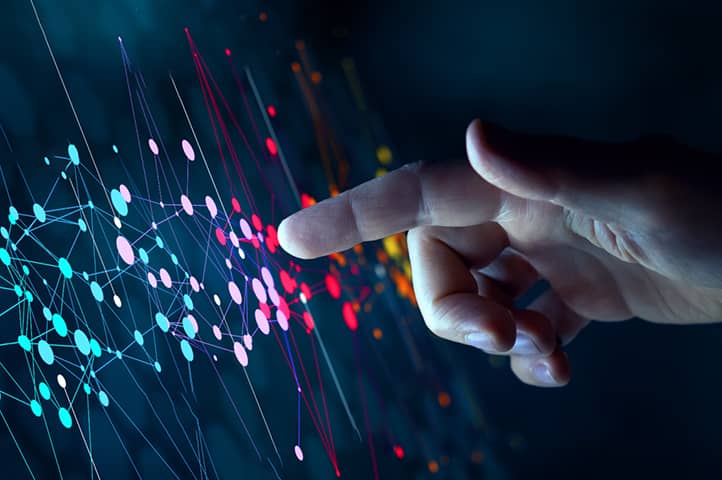
Conclusions
Technologies have had an undeniable impact on the development of psychological science, broadening its horizons and enhancing its precision. Instrumental research methods allow for deeper exploration of brain mechanisms, uncovering the nature of emotions and behavior, as well as effectively diagnosing and treating psychological disorders. As a result, psychology has moved beyond being purely a humanities discipline, incorporating the achievements of natural sciences and modern technologies into its approaches.
The use of instrumental methods has become important not only for the scientific community but also for society as a whole. It provides new opportunities for diagnosing, treating, and preventing mental disorders, making assistance more accessible and personalized. Instrumental methods also contribute to a better understanding of human nature, helping to solve social problems, improve the quality of education, management, and interpersonal relationships.
However, the development of these technologies poses serious challenges for society. Ethical aspects of using instrumental methods are becoming increasingly relevant, as working with biometric data and neurophysiological indicators requires a high level of responsibility. Confidentiality must be maintained, manipulations avoided, and technologies ensured to serve the common good rather than create additional risks.
In this context, it is essential to approach the use of modern methods from a balanced perspective: combining innovations with traditional ethical principles of psychology. The implementation of technologies should be accompanied by their responsible use so that they not only serve as tools for expanding the capabilities of science but also ensure a better future for every individual and society as a whole.
